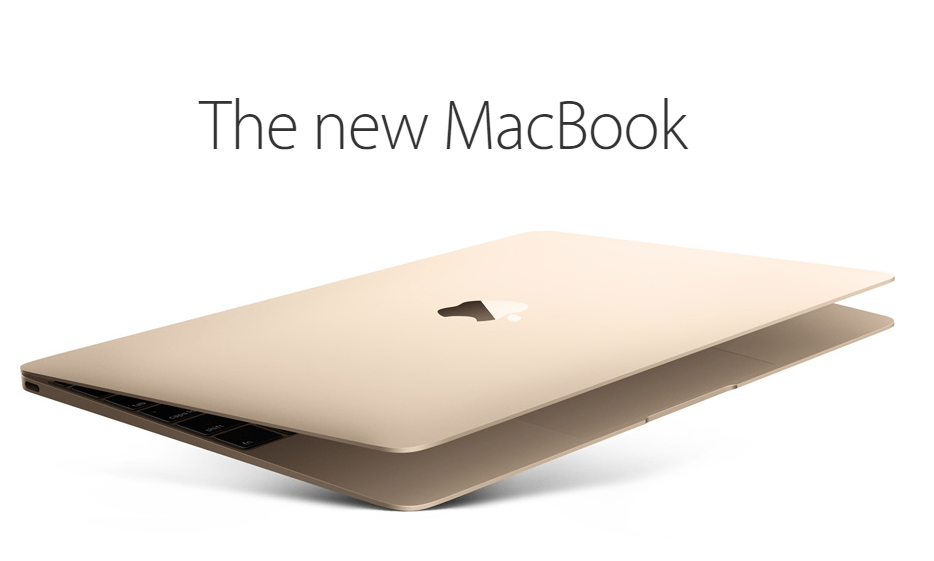Forget the new MacBook’s USB Type-C port, forget the impressive performance it’ll have to offer, and forget its extremely thin profile and reduced weight. Why? Because the freshly announced 12-inch Retina MacBook is more than a sleek new laptop. In fact, it’s really a lightly cracked window into Apple’s bright future for all its devices, whether they’re iPhones, iPads or Macs.
DON’T MISS: Why the Apple Watch is different from all the other garbage we’ve seen so far
After all, Apple’s Jony Ive said at the beginning of the design video clip for the MacBook that “the new MacBook is the result of a collective obsession to simplify its essential components to create the most efficient design possible” while also adding that “it’s a product that couldn’t exist without invention across many disciplines.” Similarly, the MacBook might also prove to be a stepping stone for many Apple products to come in the future across many disciplines.
The most amazing piece of technology in the MacBook might be its motherboard, which is two-thirds smaller than the MacBook Air’s. This smaller motherboard, combined with the removal of fans thanks to the use of an Intel Core M processor, shows how Apple is working relentlessly to shrink components in order to free up space for more battery power.
This achievement suggests that Apple will further decrease the size of crucial components inside future MacBooks and other products, including the iPhone and iPad. In fact, one of the most interesting rumors about future iPhones is that Apple is working to decrease the size of mobile motherboards and potentially use the same kind of tiny components it has devised for the Apple Watch inside its smartphones and tablets.
Furthermore, the fact that Apple is willing to ditch all ports and leave just the one USB-C connector on the MacBook suggests an even brighter future for wireless technology. Whether it’s about transferring files to and from the Mac without using any cables, or whether it’s about charging batteries wirelessly, Apple is clearly comfortable removing traditional connectors from the MacBook, including its own highly praised MagSafe and Thunderbolt ports. All this seems to indicate that Apple is already working on faster wireless transfers and developing wireless charging techniques.
What’s the point of all this removal and miniaturization? If you want answers, look no further than the new MacBook’s battery life.
The new laptop should be good enough to cover a full day of work and will need recharging only at night. This is only possible because Apple has shrunk down MacBook components so much that it can cram the device full of batteries with no hindrance to performance.
And Apple isn’t stopping there, either: We’ve seen recently filed Apple patents that describe additional charging methods, such as embedding solar cells into a display. And let’s not forget that Apple one day might make an electric car that could deliver impressive battery technology that could also be ported over to its devices.
The multi-purpose USB-C port also open doors to a bunch of new possibilities, both when it comes to data transfer speeds and battery charging times. Not only does USB Type-C recharge devices faster, but it also opens the door to third-party battery packs for the first time. Traditionally, third-party battery packs have been something that you could only get with iPads and iPhones because of restrictions with MacBooks’ Mag Safe technology. With the adoption of USB Type-C, all that has changed.
Apple has not compromised on display technology either and has included a Retina screen in the 12-inch MacBook, something it hasn’t done with its MacBook Air line yet. Not only is this proof that Apple’s committed to offering a great viewing experience on all its devices, but that those devices won’t be compromised when it comes to performance. The new MacBook’s processor, graphics and memory card should be good enough for supporting both the 12-inch Retina display and an additional 4K screen connected via that speedy USB-C port.
The Force Touch gesture of the new MacBook, which was first introduced in the Apple Watch, brings one more kind of interaction with the desktop OS that Apple customers will need to get used to. This seems to indicate that Force Touch might become even more important in the future, and could be further used in all the other MacBook models, not to mention iOS devices.
Once Force Touch is available on iPhone and/or iPad, it could open doors to new features and other design choices, such as using curved displays, eliminating physical buttons, and adding touch feedback to the screen, case or accessories. And let’s not forget that Apple already has some interesting patents for such potential iOS technologies.
There’s also the keyboard Apple felt it had to reinvent for its MacBook that could make its way into future MacBook Pro and Air designs, not to mention official accessories for the iPad.
Finally, there’s great design and build quality. Regardless of everything else, the MacBook is also an incredibly good looking piece of hardware that also looks durable enough to survive day-to-day use.
Sure, someone will try to bend the thin MacBook, and they might succeed. But Apple’s also exploring other materials when it comes to its gadgets, including Liquidmetal and sapphire glass to name just a few. With all that in mind, we shouldn’t be surprised to see iPhones and iPads further slim down in the near or more distant future, as some of the technology used for building the 12-inch MacBook could further be applied to these devices.




